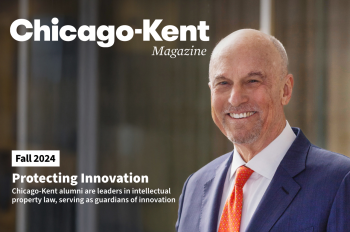Primed for Success? Maybe Not, and Here’s What Marketers Should Know

Product placement in movies is a big business that keeps getting bigger, as companies pump billions of dollars each year into putting their brands in front of moviegoers—such as, famously, the cars that 007 drives in the James Bond movies.
In an effort to increase the impact of a product placement, brand marketers may choose to publicize, or prime, the placement through advertising or media coverage. For example, Fiat Chrysler featured its Jeep Rubicon in an ad before Sahara, in which the product was placed, opened in theaters. Similarly, Audi produced a prototype RSQ Sport Coupe for the movie I, Robot, which was reported in a media outlet prior to the film’s release.
With so many marketing dollars at stake, are marketing professionals correct in their assessments of the value of movie product placements and priming? That’s a question that Siva K. Balasubramanian, Harold L. Stuart Endowed Chair in Business and professor of marketing at Illinois Institute of Technology’s Stuart School of Business, has been investigating.
Research by Balasubramanian and Giacomo Gistri, associate professor of marketing at the University of Macerata in Italy, provides evidence that may upend the conventional wisdom about product placements in movies and the effectiveness of priming. They lay out their findings in “Priming Movie Product Placements: New Insights from a Cross-National Case Study,” published in the International Journal of Advertising.
“The marketplace for these product placement opportunities places a heavy premium on what are called prominent placements,” says Balasubramanian. “Those are in your face and focused on one product, very clearly, for a long time. Maybe one of the characters says the brand name and even uses the product.” In contrast, so-called subtle product placements are less noticeable to viewers and thus are priced much lower.
“Our work calls into question the assumption that the valuation of prominent placements should be so high,” he says. “What we’re finding is that subtle placements may be undervalued and may also be safer for companies to use [than prominent placements], at least in some contexts.”
According to Balasubramanian, assessing the value of product placements and priming is complicated, because the marketing campaigns around these placements often pursue multiple objectives.
“Marketers want the audience to be able to recall the brand name after the exposure,” he explains. “They also want people to talk favorably about the brand, which is different. You may recall a brand but not have a very favorable impression of it. And third, they want the audience predisposed to buying that brand. Research has shown that these three outcomes do not always go hand-in-hand. Campaigns can do well in some outcomes and poorly in others.”
Balasubramanian and Gistri conducted tests with movie audiences in the United States and Italy to measure the effect of priming on both audience recall of the product and attitudinal outcomes, such as favorable impression and likelihood of buying the product. As a control, their study included tests of audience recall and attitude without priming.
As expected, the results show that prominent product placements have higher recall than subtle placements. However, there is a marked difference in the effects of priming on the two types of placements.
“We are finding that if prominent placements are primed, there is no additional bump in recall and attitudinal outcomes may actually go down,” Balasubramanian says. “That is certainly not a result you want. For subtle placements, though, the story is very different, and there is actually a significant increase in recall [with priming] and either no change or maybe a small increase in attitude.”
The two researchers have a recommendation for marketing professionals—prime the subtle movie product placements, but not the prominent ones.
“No other researchers have come out and said that prominent placements overpromise and under-deliver—or sometimes deliver in the opposite direction of what you expect or want—and that subtle placements actually minimize risk,” Balasubramanian says. “We break new ground there.”
Photo: Harold L. Stuart Endowed Chair in Business and Professor of Marketing Siva K. Balasubramanian




